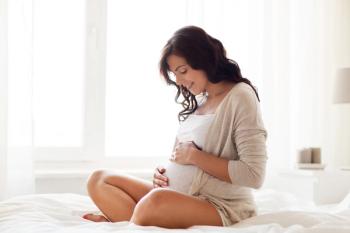
Repeated Pregnancy Loss – Is Investigation Important – Starting When?
The First World Congress On: Controversies in Obstetrics, Gynecology & InfertilityPrague, Czech Republic - 1999
Available for download in Word Document format
Epidemiology
There have been several attempts to calculate the likelihood of a pregnancy proceeding to term when preceding pregnancies have terminated in spontaneous miscarriage. The initial estimates have indicated that the likelihood of loss increases in the number of previous losses but the magnitude of risk has been known to be exaggerated (1). Although the methods of ascertainment have varied, the results of most studies are remarkably consistent in finding an increasing risk of miscarriage as the number of previous miscarriages increases. Overall, women with recurrent miscarriage have an approximately 40% risk of experiencing a miscarriage in a subsequent pregnancy (1).
Accurate information on the incidence of recurrent miscarriage is not yet available because population studies have not been carried out. Nevertheless, from observations collected from few prospective studies, recurrent miscarriage (i.e. three or more losses) has been estimated to affect 3% to 5% of couples in the reproductive age.
Women who are prone to having miscarriages tend to have more pregnancies than those with successful outcomes and at a much later age. Thus, the possibility that the apparent relationship between quantity and miscarriage may be the result of reproductive compensation, was addressed in field studies which demonstrated that it is the quality of the previous pregnancies and not the quantity that influences the risk of miscarriage. For example, women whose last pregnancy ended in miscarriage had a 19% chance of undergoing miscarriage in the next pregnancy, a significantly higher risk than in pri––– (5%), in women whose pregnancies had all been successful (4%), and in women whose last pregnancy had been successful (5%) (2). The greatest risk of miscarriage occurred in women whose pregnancy histories included only miscarriages.
From the epidemiological information it is clear that women with recurrent miscarriage constitute a high risk category for which diagnostic evaluation seems to be warranted so that the factor(s) that may be playing a causal role can be identified and treated.
Etiology of Recurrent Miscarriage
Many factors have been suggested to have a role in the etiology of recurrent miscarriage. Some of these factors are well established, whereas others are supported only by anecdotal evidence. Table 1 lists the generally recognized factors. The frequencies with which these factors have been identified vary among reports and over time and are also dependent on the specific focus of expertise or research interest of the investigator. It is also important to note that couples with recurrent miscarriage may have several factors playing a causal role at the same time. Therefore, the diagnostic evaluation should not be curtailed as soon as the first factor has been identified.
Optimal Time for Diagnostic Evaluation
There has been for some time now much debate as to how many miscarriages a woman should have before she is able to undergo a comprehensive diagnostic evaluation. Most clinicians agree that after three losses there is sufficinet justification to proceed with evaluation but it is not clear whether these losses should be consecutive in order. Those who have developed an expertise in this field agree that two losses should be the evaluation threshold and couples should not be subjected to the pain and anguish of another pregnancy loss before satisfying the age-old criterion for diagnostic work-up.
Several investigators have conducted studies to answer this question of whether to investigate after two losses or after three losses.
In one study of more than 130 couples, the diagnostic yield was in the two groups was similar. (3) The previously held belief that a work-up after only two losses has too low a diagnostic yield was not supported. Consequently, couples with at least two losses should be offered the option of undergoing comprehensive testing if they choose because the likelihood of identifying a causal factor is quite high.
References:
References
1. Daya S. Habitual Abortion. In Copeland LJ, Jarrell JF, McGregor JA (eds). Textbook of Gynecology. WB Saunders Company, Philadelphia. 1993, pp 204-230.
2. Regan L, Brande PR, Tembath PL. Influence of past reproductive performance on risk of spontaneous abortion. BMJ 1989; 299:541.
3. Plouffe L Jr, White EW, Tho SP. Recurrent abortion work-up: After 2 or 3 losses? Presented at Annual Meeting of the American Fertility Society, New Orleans 1992.
Newsletter
Get the latest clinical updates, case studies, and expert commentary in obstetric and gynecologic care. Sign up now to stay informed.











